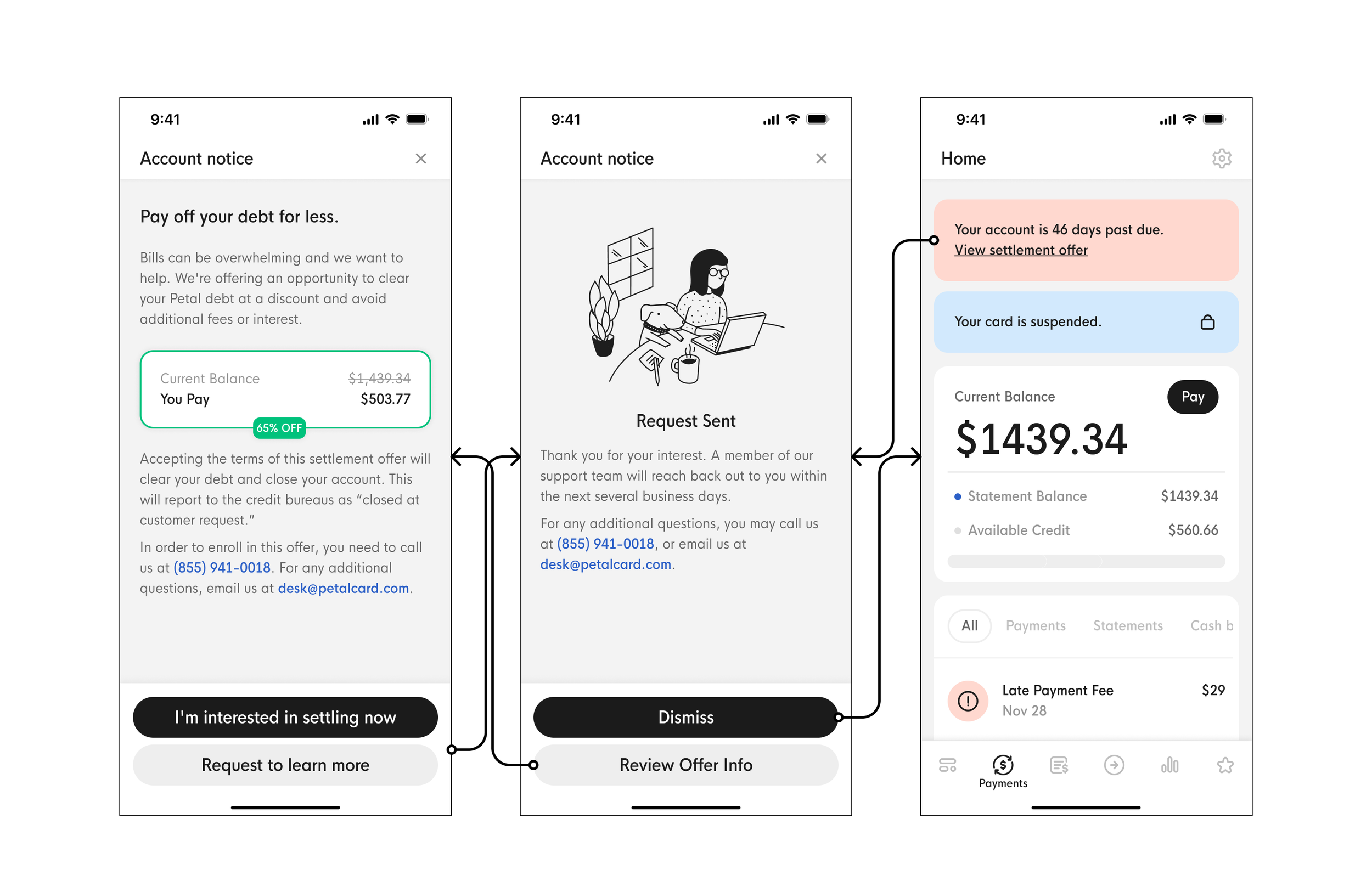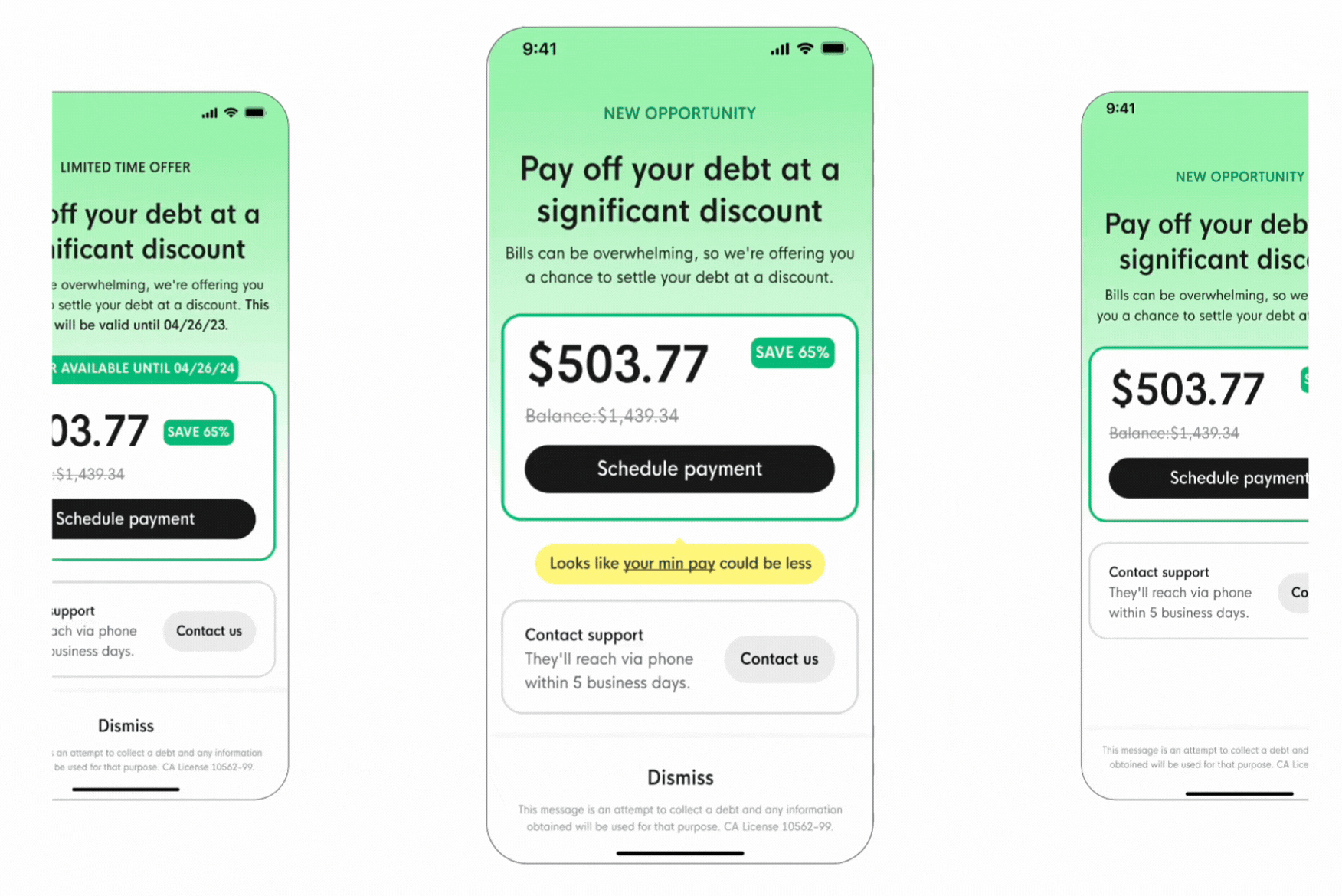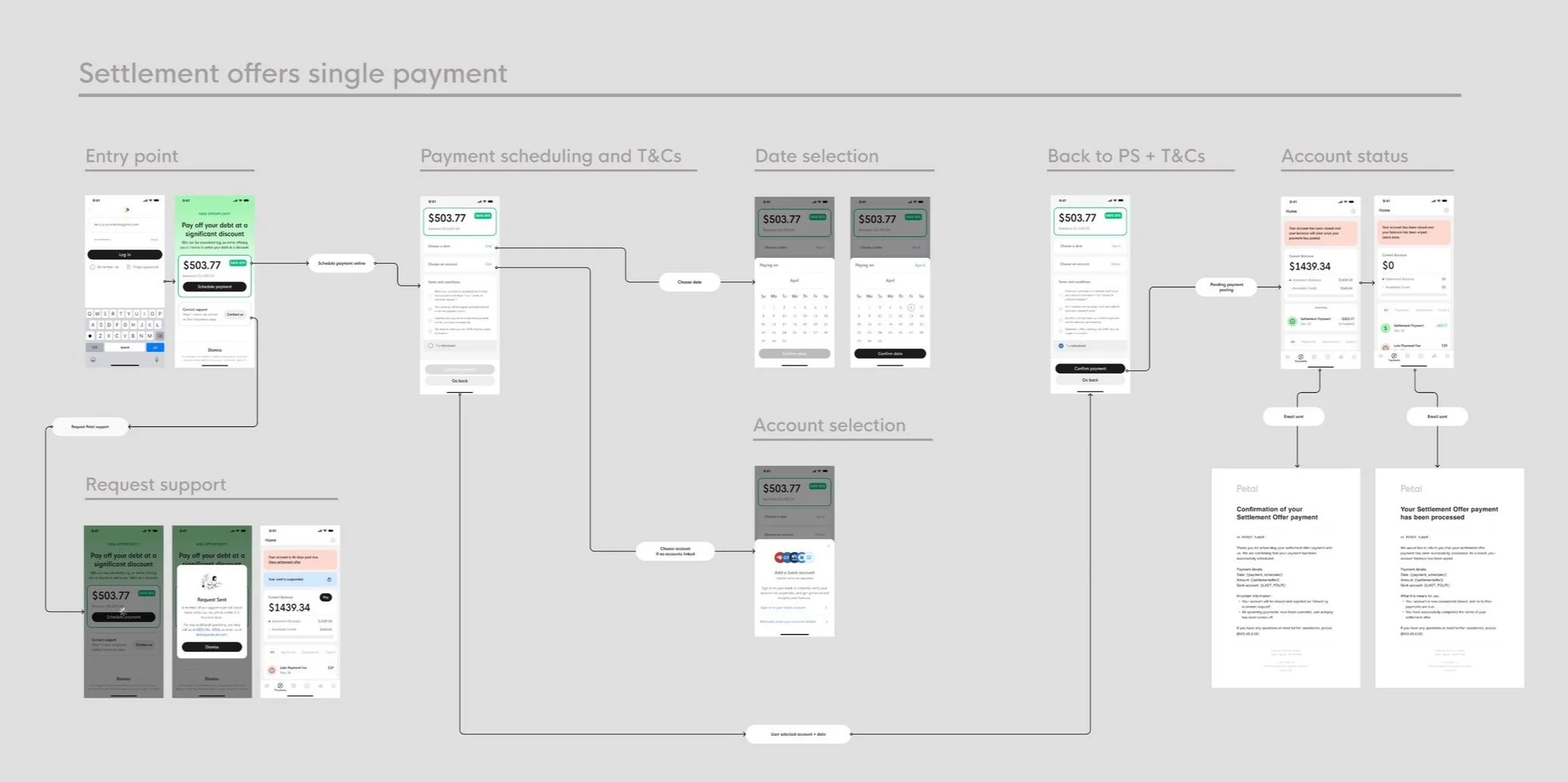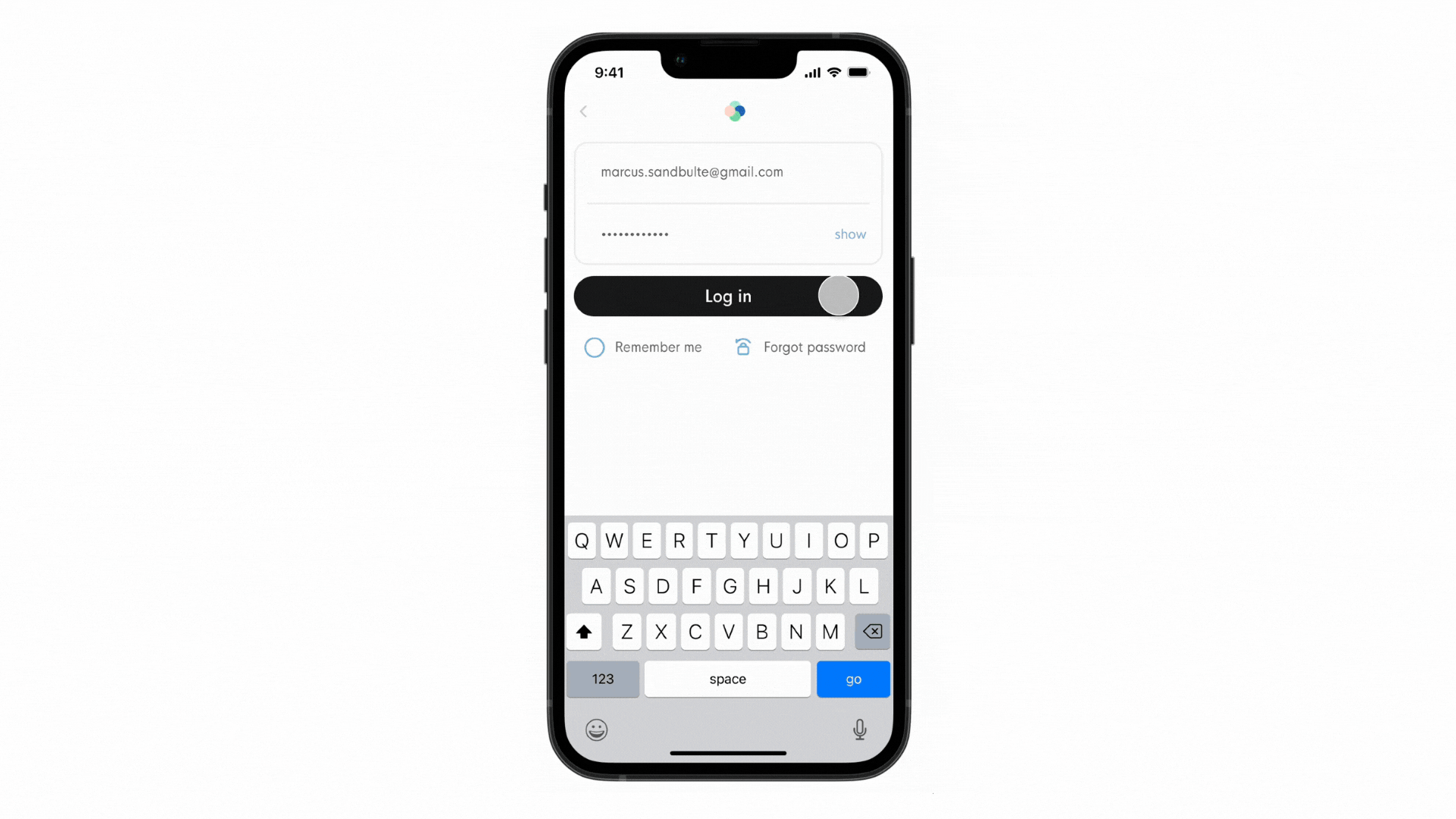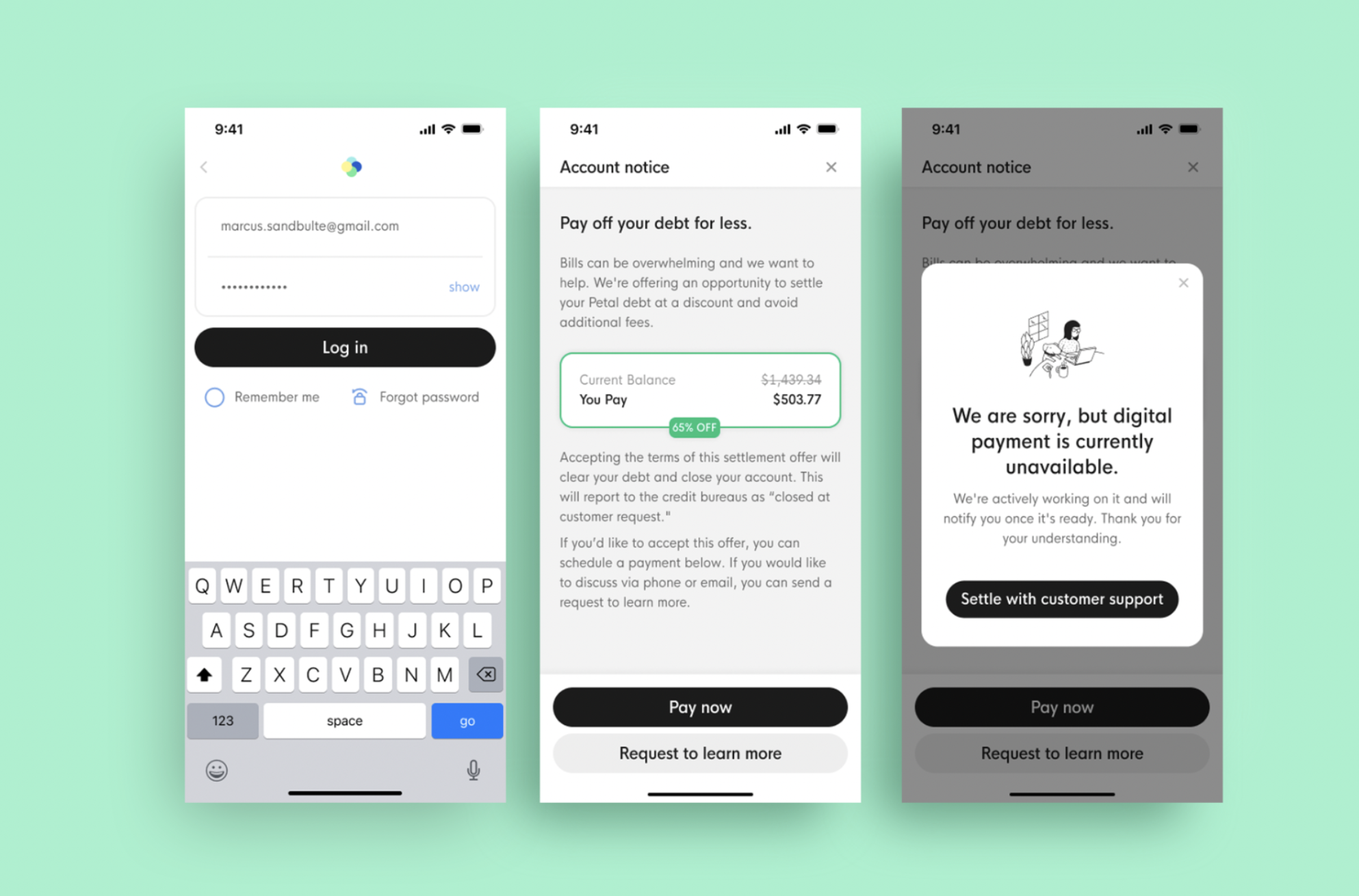Problem statement
Lack of flexibility in collections causes settlement friction
Currently, members must contact customer service to enroll or learn more in our Settlement Offer Program, which creates friction in the process (creating a UX loop) and introduces potential for human error in handling and reporting as all offer logs are done via google doc by customer support.
Hypothesis
Developing an E2E in-app settlement offer experience will ultimately benefit customers that are moving further into delinquency & prevent an increase in chargeoff losses by giving them a more comfortable solution
Due to the existing back-end infrastructure's inability to support retention and payment scheduling for settlement offers, a new back-end system will be developed in alignment with the UX designs. To streamline implementation, the product team has opted for a single payment plan, utilizing recycled components that simplify the engineering process. In a future phase, multiple payment options will be introduced, as user feedback from prior email collections and surveys indicates a strong demand for this functionality.
User and funnel research
~2400 eligible users log into the Petal app monthly. 25% clicking “I’m interested in settling now” and 23% “Request to learn more” generating $165K monthly in settlement payments
Additionally we sent a survey to 30% of eligible population and 40% of them said they wanted a digital payment experience and that their preferred time to settle was after hours around 7pm ET (CS closes at 6pm).
Competitive analysis
While researching possible inspiration we found ourselves aligning less with big banking collections strategy.
We decided that our new to credit population deserved a more human approach. We decided to refrain this settlement as a new ‘opportunity’ or ‘offer’ to benefit them. This will also motivate Petal users to take action and overall have a better, more empathic brand experience.
Wireframing + usability testing + jam session
Mid fidelity wireframes helped me dissect this complex user journey. This would also help me get further insight on what was working for users, as well as for our cross functional stakeholder
This is what I found out after I organized a long usability testing and cross functional jam session.
UI/ problem screen iterations
During our team jam session I was able to present to the cross functional stakeholders a new ‘look and feel’ for the UI, while incorporating some of the usability testing feedback beforehand
During the jam session this is some of the information I presented to the team. First, data showed that 90% of users tapped the close “X” button within the first 2 seconds, indicating they weren’t given enough time to scan the content. I realized that providing more visual hierarchy would give users the time to assess the offer. Next, the offer itself felt too transactional; competitor research revealed that a friendlier, more illustrative approach was more effective. Lastly, it was crucial to strike a balance between prompting action and showing empathy. We wanted to gently nudge users while respecting their needs, especially during a challenging time.
Final design
The new experience is intuitive and user centric. From color theory to ux copy we aim to give a better and more empathic experience to our users.
It is a journey filled with a user-first mentality while incorporating cross functional team limitations. This experience truly merges our teams ability to build front and back end infrastructures with a data backed insights.
Additional testing + temporary fixes
Our goal was to validate user demand for online payments in settlement offers, providing early insights before a full-scale rollout. To achieve this, we implemented a "hidden door" test, allowing users to proceed with customer support after clicking an online payment button, ensuring a seamless experience without disrupting ongoing collections.
Also Considering the high level of effort associated with building the full settlement offer experience, we have designed an interim user consent form that customer support can trigger during calls, leveraging our current UX framework. This approach allows us to address a key operational gap in document retention while the comprehensive settlement offer experience is under development. This strategic step ensures continuity and efficiency, supporting customer needs and operational workflows as we work toward the full launch.
Outcomes
Phase 1: Our interim solutions has improved efficiency, enabling customer support to handle more calls and increase revenue for an extra $30K a month.
Phase 2: Additionally, when we launched the full settlement offer we doubled collections from $1.9M to ~$4M.
